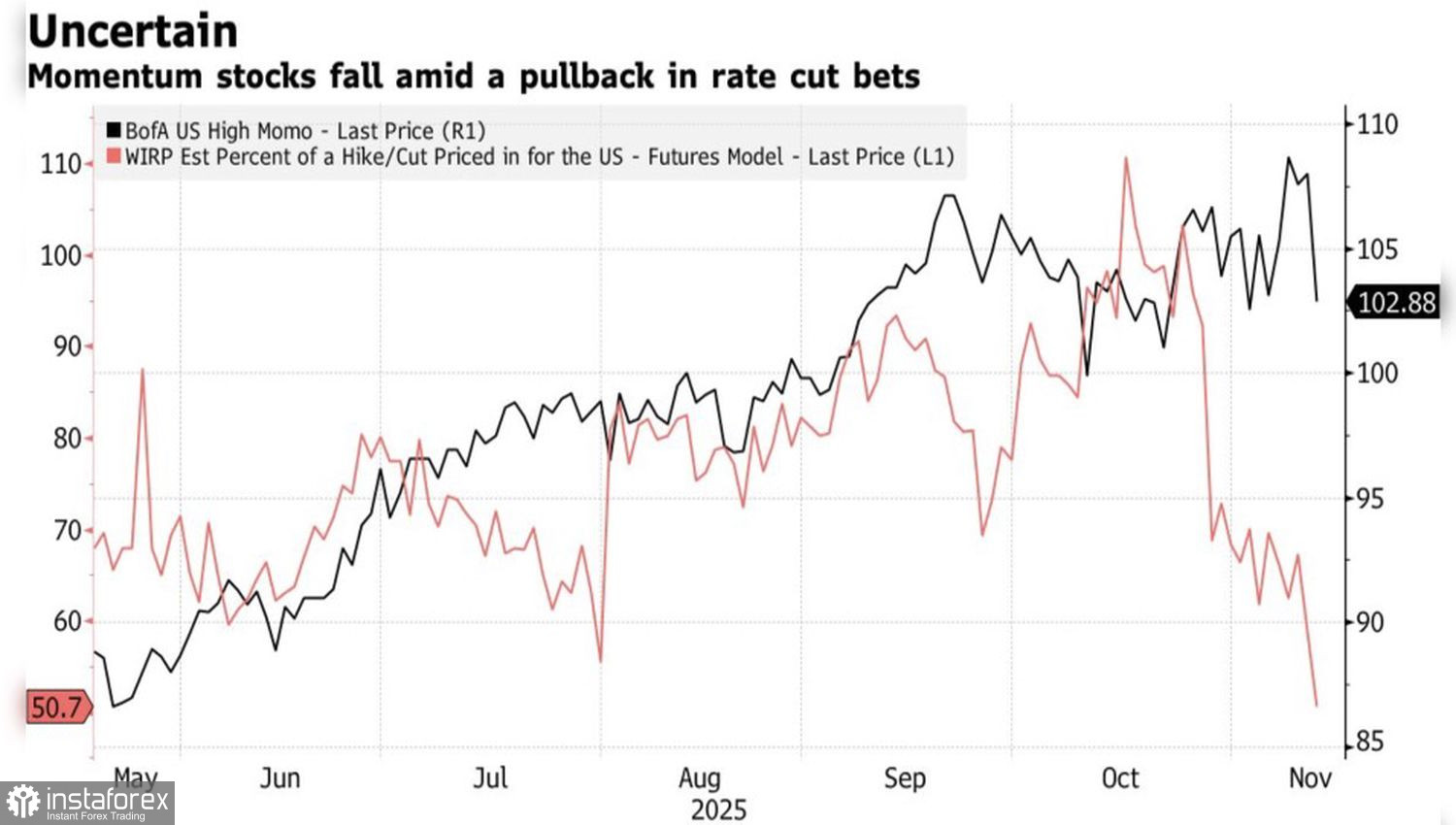Buy the rumor, sell the fact. This time-tested principle has knocked the S&P 500 out. The broad stock index found itself in the worst wave of sell-offs in a month amid the closing of long positions due to the end of the US government shutdown. Despite the government's promise to provide statistics as possible, the stock market continues to exist in a data vacuum. Investors understand that they have clearly overestimated the chances of a cut in the federal funds rate this December.
Hopes for a continuation of the Fed's monetary easing cycle served as a kind of safety cushion for the S&P 500, especially for the rapidly growing technology stocks. Confidence in the stimulus allowed investors to overlook the overvaluation of the Magnificent Seven stocks and the inability of investments in artificial intelligence to generate the necessary revenue for profitability.
As a result, the basket of rapidly growing stocks tracked by Bank of America has surged by 63% since April, significantly outperforming the broad stock index. November has brought a moment of reckoning.
Dynamics of rapidly growing stocks basket and prospects for Fed rate cuts

Doubts about the effectiveness of investing in big tech have led to portfolio diversification. Investors are shifting away from fast-growing and expensive stocks toward safe and cheaper options. The high market concentration and dependence on giants have resulted in a decline in the S&P 500.
Moreover, the situation with the September resumption of the monetary easing cycle is repeating itself. Back then, the broad stock index had surged ahead. Investors firmly believed that the Fed would aggressively cut interest rates. However, the updated FOMC forecasts indicated two acts of monetary easing before the end of 2025 and only one in 2026. The market tempered its appetite, and the S&P 500 fell. Yet, back then, belief in artificial intelligence technologies was unshakable. Bulls immediately bought the dip, and stocks continued their rally. As autumn draws to a close, the situation has changed significantly.
The division within the Fed is evident. St. Louis Fed President Alberto Musalem and Cleveland Fed President Beth Hammack insist on keeping interest rates steady to prevent further inflation acceleration. Their colleagues at the Atlanta Fed, Raphael Bostic, and the San Francisco Fed, Mary Daly, have not yet made decisions regarding the December vote.

The hawks are increasingly expressing their discontent, leading to a decrease in the likelihood of a federal funds rate cut at year-end from 72% a week ago to 52%. As a result, Treasury yields are rising, global risk appetite is deteriorating, and stock prices are falling.
Technically, the daily chart of the S&P 500 shows the formation of a 1-2-3 reversal pattern. If quotes fall below 6,550, an Expanding Wedge may emerge as well. These patterns increase the likelihood of a significant correction. The bulls' inability to hold above the fair value at 6,850 has become a reason for selling. Therefore, it makes sense to add short positions.
 English
English 
 Русский
Русский Bahasa Indonesia
Bahasa Indonesia Bahasa Malay
Bahasa Malay ไทย
ไทย Español
Español Deutsch
Deutsch Български
Български Français
Français Tiếng Việt
Tiếng Việt 中文
中文 বাংলা
বাংলা हिन्दी
हिन्दी Čeština
Čeština Українська
Українська Română
Română

